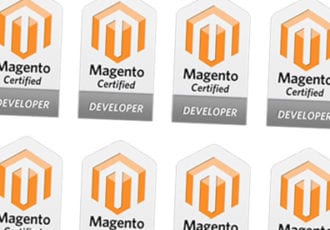Warren Buffet’s eCommerce Store


Warren Buffet is the world’s most successful investor and from time to time the world’s richest man – let’s see what we can learn from the Oracle of Omaha.
If Warren Buffet owned an eCommerce store, what would it look like?
I’m currently making my way through Warren Buffet’s annual letters to shareholders. They are a fascinating read, providing deep insights, not only on the topic of investing, but also on business in general.
As I work mainly in eCommerce it got me thinking about how his ideas could be applied here. This brings us to the big question, “What would a Warren Buffet eCommerce store look like?”
Let’s answer this with Buffet’s own words and proven business strategies:
1. Warren Buffet’s eCommerce store would have a wide moat
Buffet only invests in businesses with a wide moat, and by that he means a sustainable competitive advantage. What does that look like? Well, that depends on the business, but the following are examples of things that would stand out:
Cost of SwitchingExample: Oracle – Difficult to move databases once its running your core business systems. So an example of this in eCommerce could be something like Nespresso where you have a high cost of switching and an initial investment you want to protect.
Legislation
Example: A set of firms that are only allowed to sell in a certain market. In eCommerce this could be online pharmacies that have accreditation to sell a certain product or service.
Brand Authority
Example: Tiffany’s Jewelers. Tiffany themselves have an online store so this is an example in itself but this is probably the most common type of moat in eCommerce that I work with. Think of brands like N Peal, Ralph Loren & Mont Blanc you can command a higher price just because of the brand equity they have.
Patents
Example: IBM – They have a huge portfolio of patents they license. In eCommerce an example of this would be a maker of pans like Swiss Diamond who have a patent on a non stick coating which only they can make.
Business Structure
Example: Cost structure of Geico. An example of this would be a company like Amazon whose structure and cash resources can kill the competition if they so choose.
So for eCommerce we will primarily deal with brand and business structure moats. In the assessment stage, the eCommerce business in question should have one or the other, either a powerful brand or a cost structure that is hard to replicate.
Brand Authority Explained
For a brand to mean anything it has to carry authority, which means it has the ability to change the consumer’s behavior. A consumer is loyal to their brand and they are willing to pay more for the authority it carries.They believe in it. Now, just because a company is large or well known does not mean it carries brand authority. For example, Sony is a large brand but cannot sell their DVD players at a marked increase to the commoditised industry. Good examples of brands that people pay extra for are well known luxury brands, like Ralph Lauren.
1. Cost Structure
Cost structure in eCommerce is different than traditional retail costs. Online, costs can be kept low by locating offices outside of city centers in areas of low employment, centralising distribution hubs and call centre teams. They can also be done with the right marketing structure, such as a focus on email and direct mail if done well.
2. It wouldn’t do anything crazy
Buffet has a habit of only investing in businesses that he understands, so he has not invested in technology. Even though one of his best friends is Bill Gates, he has not invested in Microsoft. Instead, he’s invested in a furniture business, a chocolate business and a supermarket. All businesses he chooses sell something that is easy to understand. The furniture business sells on cost savings and seems to be able to sell much cheaper than the competition due to its culture and structure. The cost savings are so good, customers drive from different states to take advantage of the discounts. An eCommerce store to parallel this model would have a significant cost advantage due to buying power, scale or something that gives it an edge. Furniture sites like http://www.oakfurnitureland.co.uk/ come to mind, but I have only looked at this business from an outside point of view. But the clear one that fits this model would be Amazon, however Buffet would be wary of a company that trades at a price earnings ratio of over 500 (ouch).
His chocolate business has a strong, authoritative brand and can leverage this to charge more for its product than the competition. So perhaps the business would be something like AGA, who we are working with at the moment. AGA has a strong brand and people want to buy nothing else. That’s an excellent business moat, and one that can stay in place with good management (and a great eCommerce team!).
3. He’d be Geeky about the important numbers
Warren Buffet speaks to the manager of his insurance company Ajit Jain everyday to listen to the key numbers. So for eCommerce he would want to know figures such as
Everything that makes a difference and shows where the company is currently and moving to.
4. It would only discount when it made sense to do so
Mr Buffet has a lot of insurance based businesses and one thing he does very well is to hold off from writing business when it doesn’t make sense to do so. This is hard to do when you have a team of people sitting idle if they don’t make sales. Many businesses fall to the pressure and start slashing prices. Not Buffet. Instead, he waits till the business market prices are right. So this eCommerce store would not discount just to reach projected goals or to beat last years figures, just because it wants to. Instead, it would wait for the market to swing its way and then load up. This eCommerce business would favour long term results instead of short term profits. It would be known as a patient business.
5. It would not have high debt or no earnings
I doubt this eCommerce business would be a ‘start up’ not because some of these business are not doing well, but because they would not have enough history for there to be confidence that they have built up ‘moat’ to sustain them for the long term. So, quite possibly this eCommerce business would be selling something fairly dull but consistently profitable, like home safes, paving stones, or something that has been quietly returning good amounts on capital employed for a long time.
6. It would not be for sale
Mr Buffet buys for keeps, so this eCommerce business would not be something that is being built or bought to increase profits and quickly flip. Instead, the intention would be to own it forever, as long as the moat remains in place.
7. If sales were declining he wouldn’t flog a dead horse.
Buffet started out in a textile mill where he quickly realized that this industry requires large amounts of capital just to break even. It was hard to really turn a solid profit. For example, new machinery was required in order to produce new fabrics, but as soon as one factory upgraded the other factories did the same, bringing down profits. So, instead of ploughing more money into decreasing returns, he started building businesses in other industries where the returns were higher. With this as our model, if an eCommerce business was generating cash but was on the decline, perhaps investing in a new eCommerce business in an area with a higher earning potential would be a better choice than investing more in the same business that was clearly declining. Again, this is very hard to do in practice, as you always want to keep growing even when the tide is against you.
8. He would be looking for mis-priced bets
With his stock portfolio, Warren Buffet is always on the lookout for companies that have high intrinsic value but a much lower stock market price. With eCommerce, that is undervalued or is a fair price for a great business. Perhaps he would look at the aging population in the UK and see some products that are going to grow in importance and build a good solid brand in this area.
When taking Warren Buffet’s basic business and investing insights we can clearly see that his strategy crosses over to eCommerce.
I have enjoyed writing this article and would love to hear your ideas on the kind of eCommerce business Warren Buffet would buy or run! What do you have to say?

As a Manchester Magento development agency we are happy to invite you to the Manchester Magento meetup which we host found here >.

Great that all the main developers are now fully Magento Certified. Well done everyone https://www.linkedin.com/pulse/now-100-magento-certified-all-smartebusiness-ian-hammersley

Happy to announce that we are fully up to speed with  Magento 2!